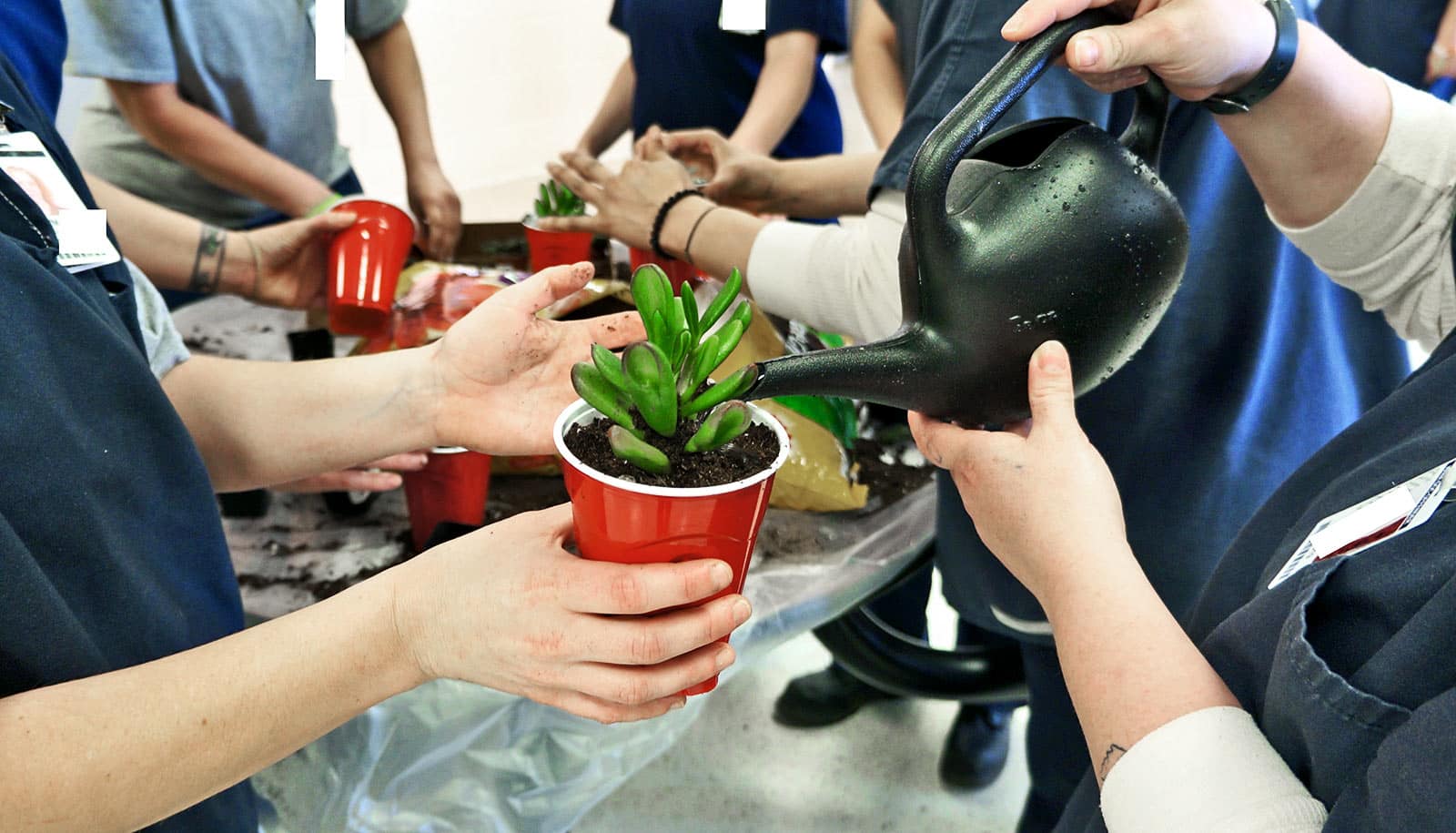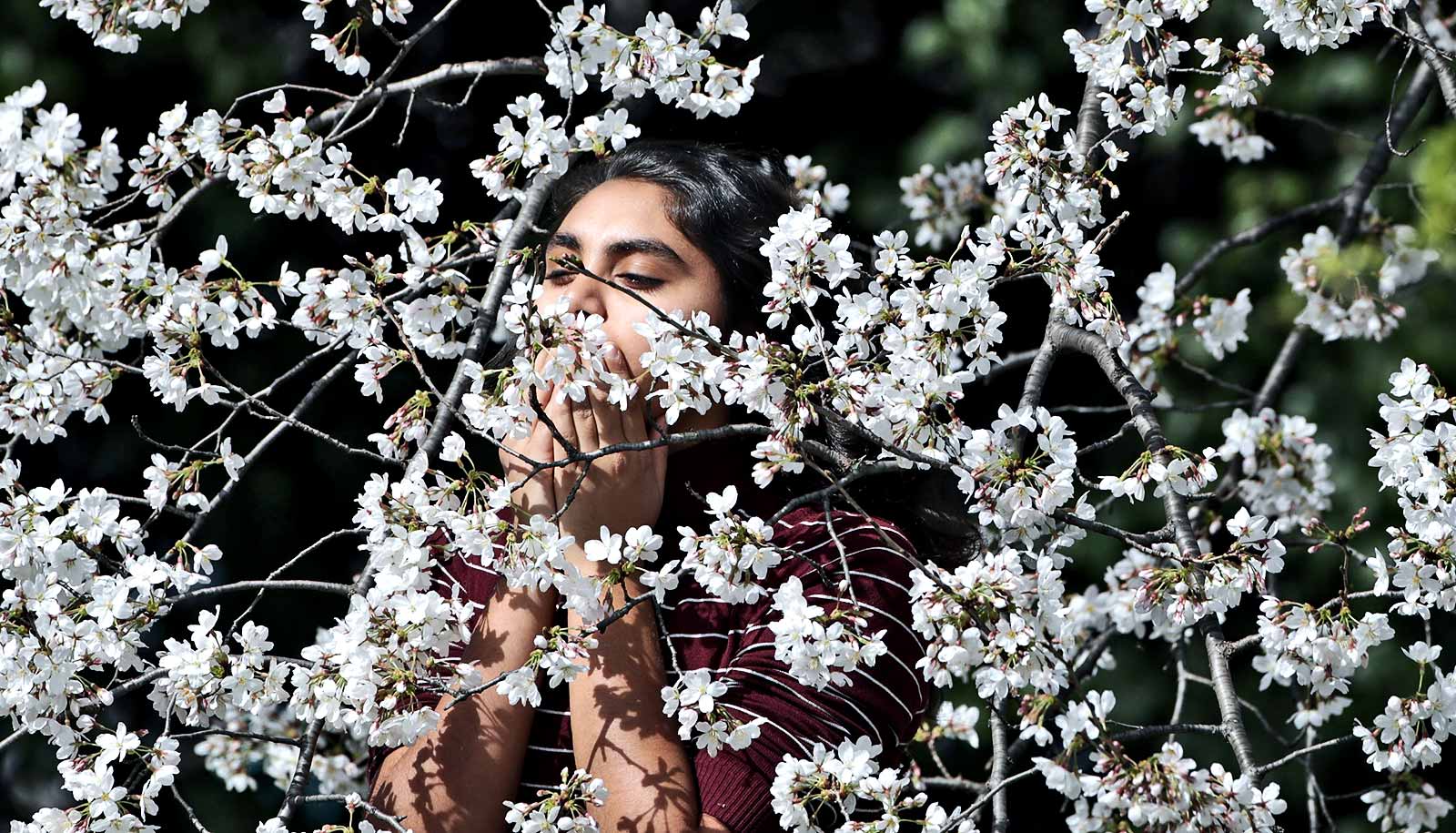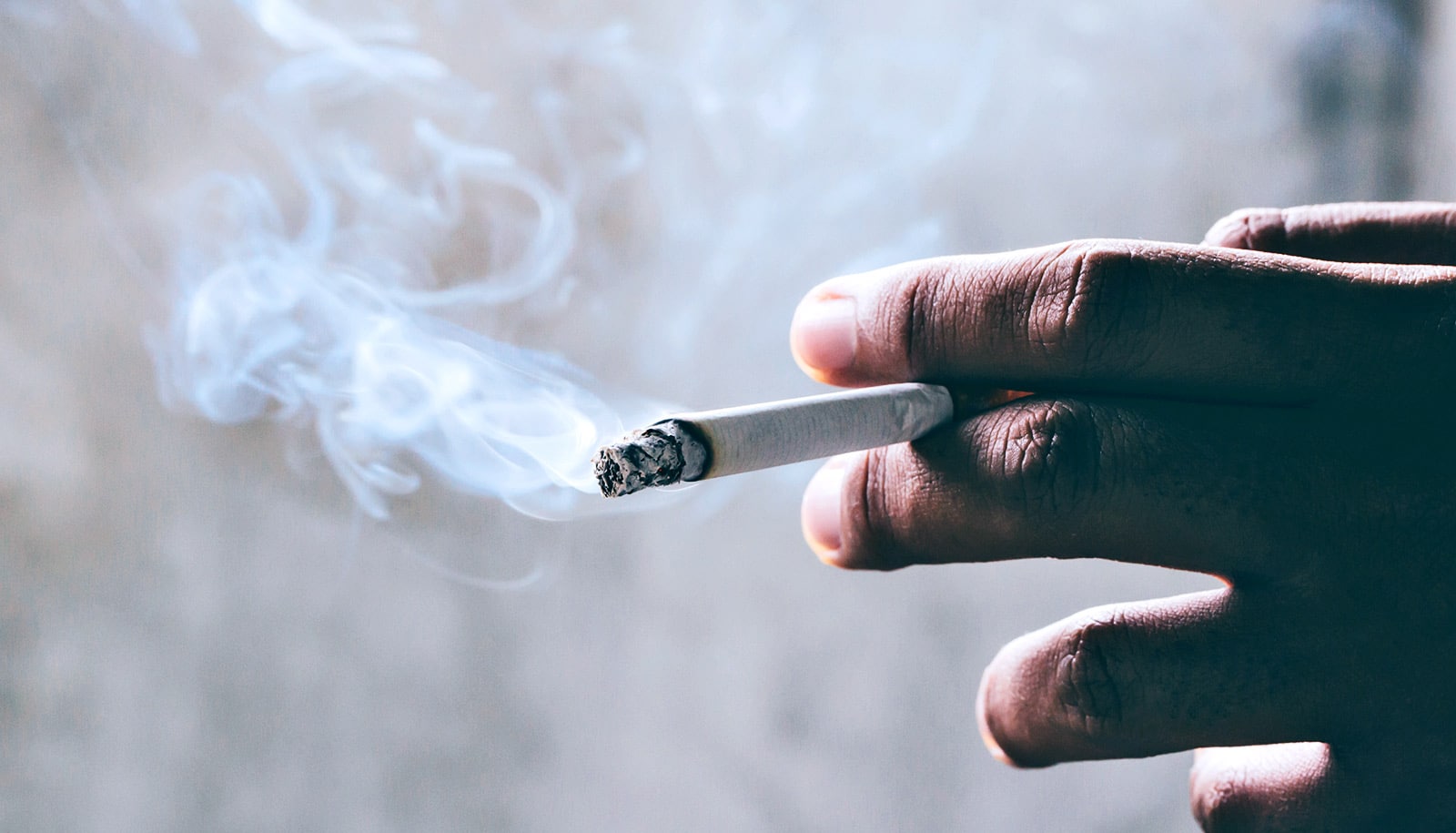A short houseplant-potting workshop can improve the mood of women in prison, according to a new small study.
But there’s more to it than that, researchers say. To the women who participated, the one-hour activity was a respite, a little slice of nature they got to bring back to their cells.
The results of that experience, says Barb Toews, assistant professor of criminal justice in the social work and criminal justice program at the University of Washington Tacoma, suggest value in expanding such activities, replicating the research, and, above all, demonstrating how interaction with nature can help achieve therapeutic and rehabilitative goals.
“So often when we think about research with people who are incarcerated, we focus on recidivism,” Toews says. “This study shows there are so many other important things that happen beyond that.
“We don’t always have to be thinking about what happens after release. People’s quality of life while they’re inside is also important, and how we create that environment for the sake of their well-being and relationships when they’re there will hopefully spill out when they’re released.”
Life on the inside
How environment affects incarcerated people and how officials can adapt prison architecture and programs to incorporate more contact with nature is interesting, Toews says.
Other research on a variety of populations, not just those in prison, shows that exposure to nature improves mental health and well-being. Researchers have evaluated long-term, nature-oriented programs for incarcerated people for their benefits: For example, horticulture classes have been associated with vocational and social skill-building and interior design and enhancements to prisons, like windows and nature videos, have been linked to lower aggression.
Toews and colleagues realized there is little research on the benefits of short-term programs, which can reach larger numbers of people and suit the limited resources of some institutions.
For the current study, which appears in the International Journal of Prisoner Health, about a dozen women incarcerated in an Iowa state prison—all of whom lived in a support wing for inmates with moderate mental health diagnoses—spent an hour in a common area transplanting succulents and African violets into small plastic cups to take back to their rooms, and potting larger plants, such as ficus and Norfolk Island pine, into larger containers for display in a common area.
While the activity didn’t require any gardening skill, it did involve social interaction and cooperation—no small task in a prison setting, Toews says. The participants completed written surveys about their emotional states before and after the planting party; five women also participated in interviews.
Sense of community
According to the surveys and the interviews, the women enjoyed the experience. The surveys provided emojis—a useful additional tool, Toews says, to help participants articulate their feelings. The women said the plants brightened their own rooms as well as the common area, and, for some participants, the event triggered positive memories or brought a sense of community.
The women used words like “homey,” “peaceful,” and “calm” to describe how they felt, and how the greenery improved their surroundings.
How long those feelings last isn’t clear, Toews says. But even at one hour, the event had some impact on the women who participated. Ideally, a facility could host a program, and a future study, on an ongoing basis.
“So often we run into people who say individuals who are incarcerated don’t deserve things like this, that it’s a luxury. But research shows it’s a necessity, and how can we provide that necessity?” Toews says.
“My interest is not just in how we can make prisons prettier or more humane, but how we can take this separation from the community and turn it into a space that promotes accountability and health, where people can feel accountable, rather than defensive, about what they’ve done.”
Additional researchers are from Iowa State University and Western Michigan University. The University of Washington Tacoma Social Work and Criminal Justice Program Summer Revenue Fund supported the work.
Source: University of Washington


